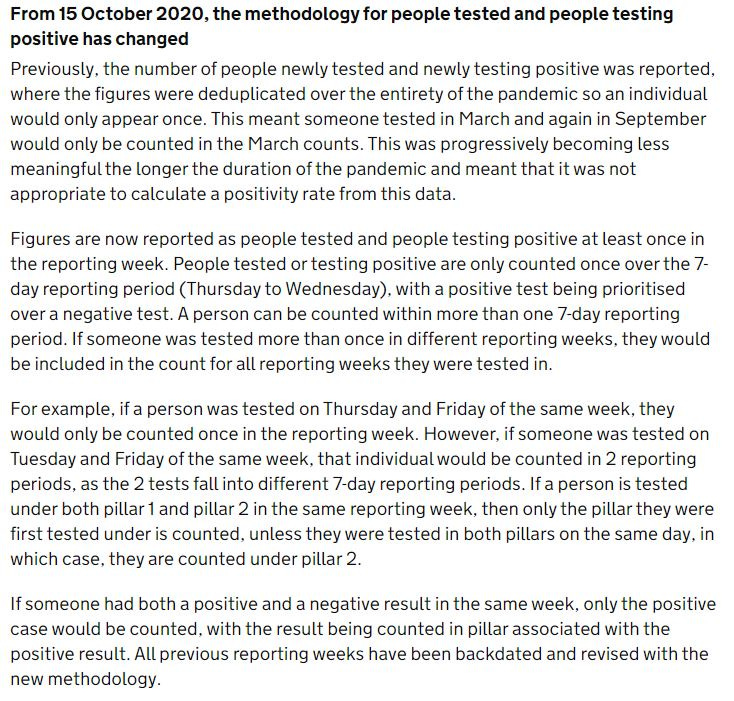Estimating Daily People Tested (part 1)
Estimation of the number of people undergoing virus tests in England prior to de-duplication of data records (rev 1.1)
In my newsletter of 25th June we discovered something rather odd, with more tested people per week than tests declared per week under the pillar 1 scheme (clinical need and frontline workers). The same was found for testing under the pillar 2 scheme (wider community) until we started adding in all possible sources of test result (satellite laboratories, home kits and lateral flow devices).
I raised the subject of de-duplication, this being an accounting method devised by the authorities that removes repeated test results for an individual such that only one test result is counted in each weekly accounting period. Definitions may be found here, and I attach a screenshot of the nitty gritty:
The trouble with this is that large numbers of negative test results are being binned, with preference for the reporting of positive test results only. In stats-speak we call this bias and ideally we should adjust for such bias if we are going to make sensible statements about detection rates. In the…




